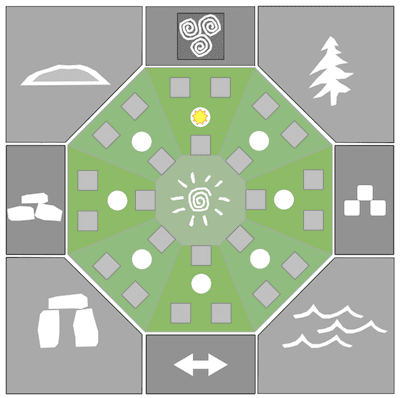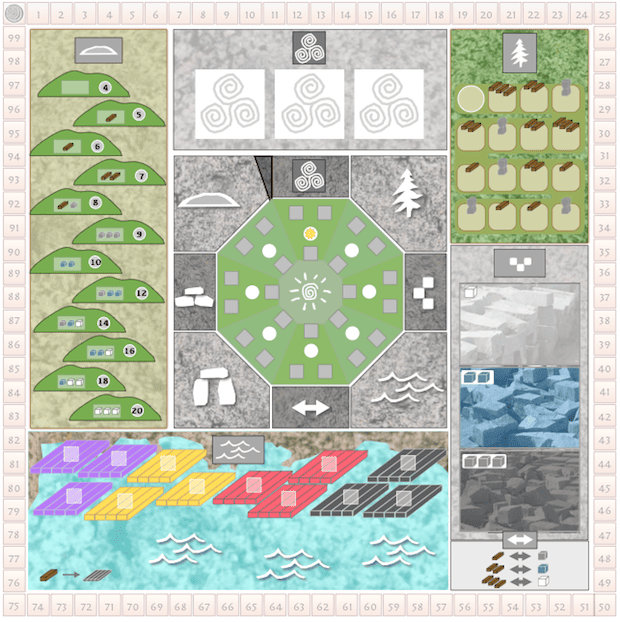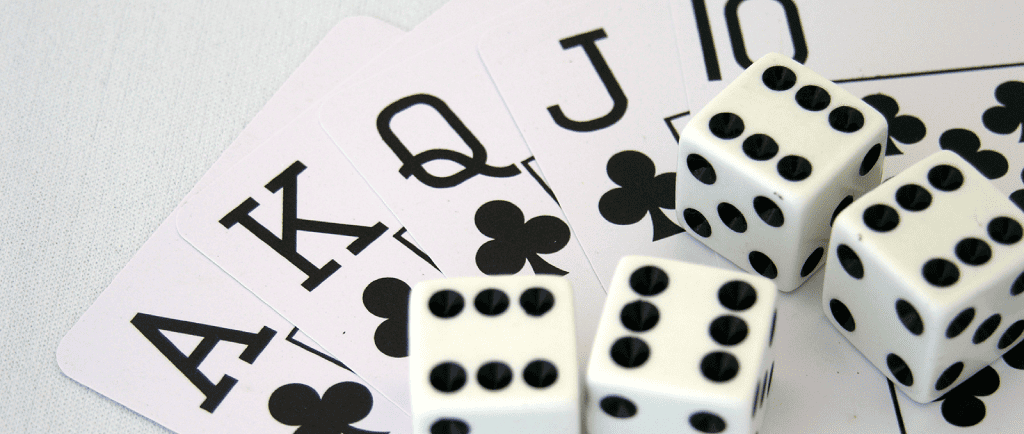
(This series will chronicle the design and development of Henges of Stone in conjunction with youtube videos, until the game is eventually published… or abandoned.)
In spite of my previous assertions about the importance of mechanics over theme, I generally don’t believe that I have arrived at a true “game idea” until I have both an interesting mechanical structure and a theme that goes with it. This piece describes how I came up with the “Henge Wheel” mechanic for selecting actions in Henges of Stone, and the construction of the initial prototype.
I BEGAN WITH THE THEME
For the boardgame Henges of Stone, I began with the vision of a game in which players would build Neolithic structures like Stonehenge. I’ve always been captivated by the mysterious standing stones, and intrigued by the productivity and ingenuity of prehistoric cultures. The depth of my feelings is more accurately conveyed through song. I recommend the following video (be advised – some strong language is used)
I wanted the gameplay of Henges of Stone to feel like the various stages of building: mining, transporting stones, and erecting structures; but I also wanted the game to capture the feeling of the cycles of the seasons and movements of the Sun, which are thought to have been revered by the henge-building Neolithic cultures. In addition, I wanted to create a mechanic that allowed henges to be “aligned with the Sun” to gain special advantages.
ACTION SELECTION
I think a lot about various ways to select actions in Euro-style games. In essence, an action selection mechanic is any mechanism that provides an opportunity for a player to choose from a given list of possible ways to do things. While there are many intriguing ways to implement action selection, I am particularly fond of and inspired by worker placement and the rondel. For Henges of Stone, I wanted an action selection mechanic that was interesting to use and would add to the feeling of being immersed in the theme.
INSPIRED BY THE GREAT ONES
Commonly designers develop new mechanics or new variations on mechanics based on their experiences playing existing games. Tzolk’in, Trajan, and rondel games in general were inspirations for the mechanics in Henges of Stone.
Tzolk’in – the Mayan Calendar, is a brain-burning heavy Euro game with a strong theme. It really gives players a feel for the passage of time with it’s turning gears, but these wheels are somewhat of an illusion. They’re actually a linear sequence of possible effects, wrapped around turning gears. Player pieces progress with each turn of the wheel along action spaces that could just as well be lines. There aren’t actually ‘cycles’ in Tzolk’in, because the actions don’t actually repeat. For Henges of Stone, I really wanted to capture that feeling of passage of time, but I also wanted a more concrete sense of repeating cycles.
Trajan is another Heavy Euro that uses a “mancala-rondel” that allows action selection similar to more traditional rondels, but with shifting values associated with different actions. Working this action-selection mechanic is a mind-bending experience, one that designer Seth Jaffee is working on refining for his design, “Crusaders,” which I’ve been playtesting. For Henges of Stone – I liked the idea of choosing actions around a circle, and I like the variable possible “strengths” for various actions, but I didn’t see the manacala-rondel as a good fit for Henges – because it doesn’t convey that passage of time feel that I wanted. I wanted something that felt more gradual, more predictable, and most of all, I wanted to build something new…
THE HENGE WHEEL: COMBINING WORKER PLACEMENT AND RONDEL
The Henge Wheel combines the mechanics of worker placement and the rondel into a new mechanical structure with a slightly different character. It allows forecasting future opportunities because it only gradually changes from turn to turn. It gives players a small number of different actions to choose from each turn, and also allows augmenting actions by concentrating action markers onto a single action space. (At least that’s the idea – further testing will see how this plays out in practice)

Here’s how it works: The Henge Wheel is octagonal in shape and divided into 8 sections corresponding to the sides of the octagon. Each section has three notches that allow placement of “standing stones” belonging to the players and distinguished by color. These standing stones can be thought of as “workers” in the sense of a worker-placement mechanic. Each side of the octagon is adjacent to a symbol printed on the main board that defines a certain action. During each round, a player takes one action, choosing from actions their standing stones are adjacent to. At the end of the round, the wheel is rotated clockwise one space, changing which actions are available for all players.

Also on the henge wheel are 8 holes that peek through to the board below. Beneath one of the holes is a symbol for the Sun. In each section of the wheel, the innermost position for a standing stone is called the “prime position”. Having a standing stone in the prime position adjacent to the Sun is important to the game, as I’ll explain in a moment.
At the beginning of the game, players take turns placing standing stones onto various spaces of the henge wheel until each player has placed three of them. Then, the game begins. As the game proceeds, there will be more opportunities to gain additional standing stones.
The starting player is the player who’s piece is in the prime position adjacent to the Sun. (If no one took that position, perhaps it would be the oldest?) The starting player takes the Sun token, which will also confer additional benefits in the game. Beginning with the starting player, each player takes one turn.
On a turn, a player can perform one action or move one standing stone.
To perform an action, a player must choose one of the actions that they have at least one standing stone adjacent to. Thus, having standing stones distributed around the wheel provides more options on each turn.
An action can be performed a number of times equal to the number of standing stones a player has adjacent to that action. Thus, more concentrated placement of standing stones allows bigger actions.
After each player has taken a turn, rotate the henge wheel clockwise one space, and then check to see if the starting player has changed. Hand the Sun token to the new starting player and begin a new round of actions.

BUILDING A PROTOTYPE
With the mechanical concept established, I needed to build a real working prototype to really see how well this idea would work.
Building a functional prototype of a game can be a complicated, time-consuming process. Henges of Stone posed additional challenges because of the need to create a mechanical, rotating “Henge Wheel.” In the video below, I go through the process of constructing this prototype, including tips on making chipboard tokens or tiles, printing on card stock, making game boards, and use of player mats. (I don’t discuss making and sleeving cards, as this game doesn’t use any cards. Perhaps I’ll do a future video on making cards for prototypes.)







